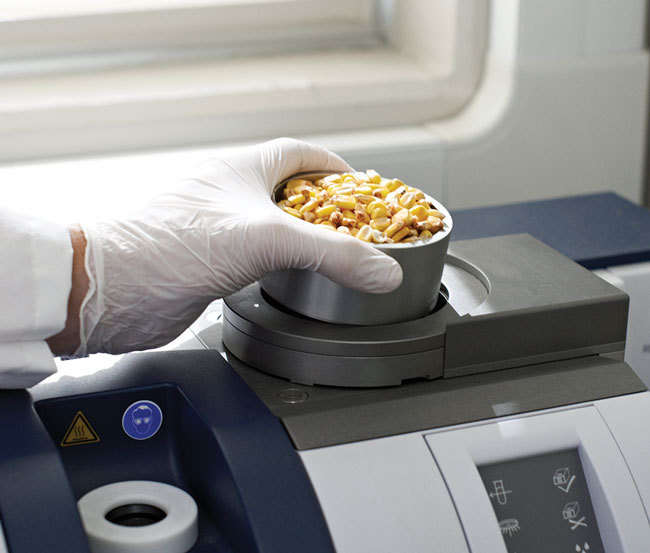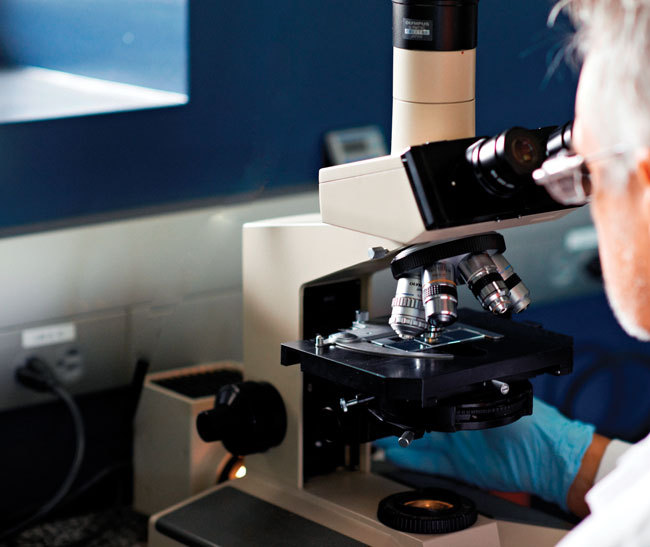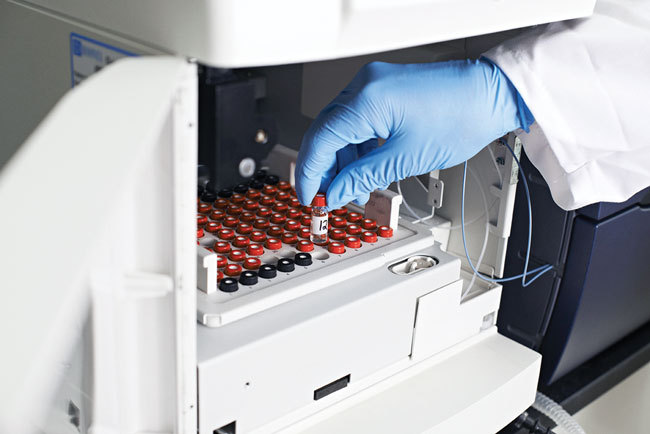Advancing the Brewing Process With New Yeasts, Enzymes





PHOTO: DUPONT
May 19, 2016
BY Susanne Retka Schill
For millennia, the recipe for brewing remained basically the same: add water and yeast to the ground grain and wait. The big innovation of the past century was the addition of enzymes to speed up the process. In comparison, the innovations of the past few years have come at a dizzying pace, with more in development. Ethanol Producer Magazine contacted four of the big innovators in yeast and enzymes this month and asked about the state of progress.
How would you describe what’s happened in recent years in yeast and enzymes? What are the most important developments?
DuPont—Casper Vroemen, research leader, North American Biorefineries
The ability to modify strains and reconstruct entire metabolic pathways have improved dramatically through genome editing technologies such as CRISPR-CAS and we are now able to target specific traits and activities in yeast and enzymes that can deliver the value that ethanol plants are looking for.
Genetically modified yeasts are here to stay, provided they deliver significant value and are robust with respect to ethanol, temperature and organic acid tolerance. Advances in enzymes continue, in particular as our understanding of process continues to improve. We are excited to be trialing some of these advances right now and look forward to future developments in our pipeline.
Edgar Seward, technical service leader, DuPont North American Biorefineries:
Today’s ethanol plants are significantly more efficient than ever before and biotechnology is one of the important drivers. The most efficient producers in today’s challenging market have found ways to lower their input costs, reduce their carbon footprint and thus produce additional RINS [renewable identification numbers used in the renewable fuel standard] for new gallons that go beyond their grandfathered gallons limits. The best-in-class dry grind ethanol plants can run at or below 26,500 Btu per gallon—a previously unthinkable level.
Novozymes—Peter Halling, vice president, Biofuel Commercial, Agriculture and Bioenergy
New developments have been driven by our customers’ needs for new solutions. We are facing fluctuating market conditions that can impact plants’ profitability. Margins matter, and we need to provide solutions to help customers manage risk and find new revenue streams. We recognize that our customers are facing a difficult market and we are dedicated to developing products to bring them new value and increase their profitability in any market condition.
DSM—Atul Thakrar, president, Bio-based Products and Services
There has been a lot of consolidation in the industry and ethanol producers are predominantly focused on optimizing the value of their plants. To this end they use different business models and rely on diversification of their output to extract more value and to become less sensitive to the volatility of corn and ethanol prizes. Innovations in crops, enzymes and yeast play a substantial role in enabling that diversification. These consumables are no longer completely separate parts of the value chain either, as we see crops and yeasts capable of expressing enzymes emerge and take market space.
Lallemand Biofuels & Distilled Spirits—Craig Pilgrim, vice president, Marketing and Product Development
Tight margins have changed priorities for some ethanol producers. Rather than pushing for more throughput, largely through capital investment, there has been increased focus on yields and efficiencies. Yeast and enzyme producers have had to innovate and develop products to increase yield so producers make more alcohol with the same amount of substrate. The enzyme manufacturers have come out with higher and more specific activity enzymes for the process. In yeast, Lallemand has modified a metabolic pathway normally used for glycerol production to produce more ethanol, instead. This has dramatically increased yield and profitability for the producer.
What about the challenge of introducing new yeasts and enzymes?
Lallemand—Pilgrim
One of the challenges of introducing new innovative products is the reticence of some to try new technology. In a time of tight margins, any disruption is not welcome. Consistency is key for ethanol producers. However the benefits outweigh the trepidation of using something new. Most of the people we work with are partners and know a long time before the general release of the product that it is coming. We discuss what it is, what are the benefits, how we should test it and ultimately implement it. The trajectory of the implementation of new products is very sharp. The time frame from conception to implementation is very quick. It’s not unrealistic that every 12 to 18 months a “new” product will be introduced within the market.
DuPont—Seward
There are two types of trials with fundamentally different objectives:
1. A precommercial trial, in which the new yeast or enzyme is being evaluated for the first time, is needed to ensure that the performance scales from the lab and pilot to full scale. Here our primary objective is to do no harm to the ethanol producer, our secondary objective is to learn, this means having clear plans for what to do if issues arise and how to mitigate them. This type of trial requires very close collaboration and a significant risk tolerance and so it is certainly not for everyone.
2. A commercial trial is very different. For customers to try something new, they need to improve their operations in a measurable and important way. Preparation is key: establishing the pre-trial baseline, reviewing the operating parameters and expected performance. Only then is our trial team ready to begin the trial and deliver the promised performance.
DSM—Thakrar
Improvements with yeasts and enzymes to enhance productivity developed at lab and pilot scale need to be demonstrated in the full-scale plants that are becoming increasingly complex to operate due to technologies like corn oil extraction and fiber separation. Therefore, there is a bigger need for service and support from the technology providers who play an important role in developing new technologies and ensuring these can be adequately applied at a commercial scale. The companies developing and rolling out these new technologies are also the driving force for plants to optimize their processes, maximize value and diversify the portfolio.
Novozymes—Halling
We’re not just innovating for the sake of innovation. We are doing it to help our customers increase their profitability, whether they are looking for higher ethanol yields, increased throughput or adding sidestreams. We have to have the broadest, highest-performing toolbox and full value package in the industry for all types of plants and market conditions and we will be continuing to add to it in the future.
What lies ahead? Will this pace of innovation continue?
DuPont—Seward
We are excited about the prospects for innovation in ethanol production because our customers are relentlessly focused on improvement, and the tools at our disposal are better than ever before. Our innovation is focused on three main areas: increasing ethanol yield, improving the value of DDGS and enhancing operational efficiencies. Our work on enzymes for Gen 1.5 has delivered on the first two categories, not just in the laboratory but also at plant scale at Quad County Corn Processors.
Novozymes—Halling
Right now, we are competing in a fierce, low-growth market and the winners in this market will be the companies that keep innovating. Novozymes has always invested heavily in R&D; in fact, 14 percent of our spending goes into research. We strive to provide continuous innovation to bring our customers new value.
Lallemand—Pilgrim
New products currently are necessary as we are up against a limited market. Making more out of the same substrate is key. There is plenty more that biotech organisms can do to provide even greater efficiency improvements and we have exciting new products in the innovation pipeline. Take the cellulosic market as an example. There have been advances in enzyme technology and functionality and also in ethanologens to convert those sugars into ethanol. The foundation for the cellulosic industry is here, now the production costs have to come down. This is an example of how technology has advanced to make cellulosic a reality rather than a dream. This will reward those producers that embrace innovation and are willing to try to products.
DSM—Thakrar
To fit within our planet’s limits while simultaneously responding to two of the most pressing global issues, climate change and resource scarcity, we need to transition to a circular economy in which products and systems are designed so they can be returned and the materials recycled, reused or remanufactured. A circular economy naturally encompasses a shift from fossil fuels to the use of renewable energy, the eradication of waste and the role of diversity as a characteristic of resilient and productive systems.
In line with these principles, future plants will be integrated biorefineries, rather than ethanol plants. We will need decades to evolve in such a way that these biorefineries extract every ounce of value, much like the value in oil refineries has evolved from crude oil to various transportation fuels and chemicals. Indeed, crops are the future oil.
The first steps have been achieved in several arenas. Corn has experienced tremendous innovation to efficiently extract oils and ethanol and animal feed. Corn residue has progressed from aggregating it efficiently and processing it to capture the carbon. Eventually, lignin technologies will evolve beyond just burning it for the caloric value to extracting and separating C5 and C6 components for different value streams and the carbon dioxide byproduct will be captured and converted.
The biorefineries of the future will use a range of novel technologies and processes, requiring significant investments in research, development and deployment to reduce costs, improve performance and achieve competitiveness with fossil fuels. Therefore, the role of technology providers becomes increasingly important to establish winning technologies and secure long-term leadership amongst competition. Open innovation is needed to gather all competencies throughout the value chain required for success, to share risks and rewards and speed up and strengthen technology positions.
-------------------------------------------------------------------------------------------------------------------
Lallemand Innovation
In collaboration with Mascoma, TransFerm YieldPlus was the first successful, truly bioengineered yeast introduced into the fuel ethanol market in the past 10 years. The insertion of a gene allows the yeast to produce glucoamylase and a glycerol reduction pathway converts excess glycerol into ethanol, thus increasing yield. Lallemand also worked with Mascoma, which it since has acquired, to introduce C5 Fuel, an engineered yeast that utilizes a bacterial xylose isomerase pathway to convert C5 sugars (xylose) into ethanol. It can utilize multiple substrates from sugarcane bagasse to switchgrass, corn stover and softwoods. A second cellulosic yeast, XyloFerm, was developed in collaboration with Swedish partner, Taurus Energy. This yeast is engineered with a xylose reductase pathway, a different mode of sugar-to-ethanol conversion than used with C5 Fuel. Offering both yeasts provides plants a choice in utilizing which cellulosic yeast works best in a given system.
DSM Innovation
DSM has more than 140 years of experience in biotechnology and a leadership position in conversion technologies for cellulosic biomass to ethanol. DSM’s business model is to demonstrate its technology via strategic investments and partnerships along the value chain, providing conversion technologies and yeast and enzyme products while focusing on green materials with better performance and lower environmental footprint. DSM’s strategy is to license its technology and expertise to bio-entrepreneurs. The company’s combination of biotechnology competences spurs innovation through new robust enzyme mixes able to break down biomass more efficiently at higher temperatures and advanced yeast strain for simultaneous conversion of C6 and C5 sugars and other carbons into ethanol.
Novozymes Innovation
Novozymes recently launched two liquefaction solutions. Liquozyme LpH was released last summer and is especially popular for plants that want to eliminate or reduce ammonia storage and handling. It significantly increases front-end efficiency by enabling high solids loading and increased throughput. Avantec Amp is the newest and most advanced liquefaction product, delivering producers more than 70 percent nitrogen reduction, up to 15 percent more corn oil, and 2 to 3 percent more ethanol yield. A typical 110 MMgy plant may handle, store and use 6,000 sacks of urea per year, used to support yeast health. The new enzyme virtually eliminates that process requirement, which can result in $700,000 savings per year for a 110 MMgy plant.
DuPont
Trehalase is one of the most exciting recent developments, allowing customers using Distillase XP to convert the 12 million pounds of previously unfermentable sugar into nearly $1 million of ethanol at a 100 MMgy plant (at $1.53 per gallon ethanol). The new enzyme is the culmination of collaborative work by DuPont’s global R&D team with the help of the team at DuPont's, Cedar Rapids, Iowa, Applied Innovation Center, who validated performance, and the technical service team, who assisted customers in trialing and adopting the technology.
------------------------------------------------------------------------------------------------------------------
Author: Susanne Retka Schill
Managing Editor, Ethanol Producer Magazine
701-738-4922
sretkaschill@bbiinternational.com
Advertisement
Advertisement
Related Stories
U.S. fuel ethanol capacity fell slightly in April, while biodiesel and renewable diesel capacity held steady, according to data released by the U.S. EIA on June 30. Feedstock consumption was down when compared to the previous month.
XCF Global Inc. on July 8 provided a production update on its flagship New Rise Reno facility, underscoring that the plant has successfully produced SAF, renewable diesel, and renewable naphtha during its initial ramp-up.
The USDA’s Risk Management Agency is implementing multiple changes to the Camelina pilot insurance program for the 2026 and succeeding crop years. The changes will expand coverage options and provide greater flexibility for producers.
EcoCeres Inc. has signed a multi-year agreement to supply British Airways with sustainable aviation fuel (SAF). The fuel will be produced from 100% waste-based biomass feedstock, such as used cooking oil (UCO).
SAF Magazine and the Commercial Aviation Alternative Fuels Initiative announced the preliminary agenda for the North American SAF Conference and Expo, being held Sept. 22-24 at the Minneapolis Convention Center in Minneapolis, Minnesota.
Upcoming Events










